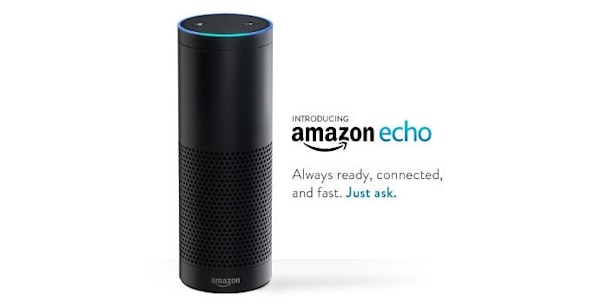Say hello or wave goodbye? How consumers really feel about voice assistants
Until pretty recently voice assistants were the stuff of science fiction, from the murderous Hal of ‘2001 a Space Odyssey’ to the ever helpful Jarvis of ‘Iron Man’. Fiction and fact began to blur with Siri’s integration into the iPhone 4S around the same time as we saw Theodore Twombly fall for the bodiless Samantha in ‘Her’.

Amazon's voice assistant 'Alexa'
Thanks to new research from the Institute of Practicioners in Advertising, we can now track the statistical prevalence of, and consumer sentiment towards, virtual assistants.
There are solid signs of take up with around a quarter (26%) of the sample having used voice assistant (VA) technology and a further 20% who have not yet used a VA are interested in using one in future.
And there are a myriad of ways in which consumers cite the potential VA functionalities which hold sizeable appeal. For example, 65% of users are interested in using the technology to control home appliances; 56% of users are interested in using the technology to book services; and 42% of users report to being interested in using voice assistants to order groceries.
However we must also be mindful that there is still some opposition evident and perceived barriers cited. Half (54%) the sample indicated they have not used voice assistant technology and are not interested in doing so in future, namely because they don’t see how they can benefit from the technology. Perhaps to be expected, this sentiment increases with age (60% among non-interested baby boomers compared to 46% among non-interested gen Y). Furthermore, around three in 10 (29%) say they don’t like the idea of speaking commands out loud. And security is an issue, with a quarter “worrying about the security of using it”, a figure which rises to 31% among 25-34s (followed by 27% of 35-44s).
In addition to these benchmark figures, the increasing awareness and conversation around voice assistant technology is noted in broader cultural references. The 21st season of South Park kicked off in September with the character Cartman triggering a virtual Amazon Alexa and adding disgusting items to its shopping list. Later that month, the Sun newspaper reported a pet grey parrot mimicking its owner and ordering gift vouchers via Alexa.
So, why now? And what now?
A couple of statistical references provide a clue…
A common metric in the performance of speech recognition is the Word Error Rate (WER). In 1995 the WER for natural language processing software was 100% – that is to say it was literally all errors. As recently as 2013 the rate had dropped very significantly but was still 23%. It was not until 2016 that parity with humans was reached.
Once this technical limitation had been overcome, the opportunity becomes increasingly clear via a second statistic: the average person types around 40 words per minute but speaks at nearly four times this rate.
With this in mind, the more optimistic predictions are that as soon as 2018, 30% of our interactions with technology will be 'conversations' with smart machines. A year after this figure was published it feels a little high a little soon, however the implications for very significant voice UI share remain crucial.
For our own industry, not least, where do the advertisements go in voice-based interactions? If search moves to voice what happens to Google’s business model? It’s interesting to note it trialled unsolicited audio ads via Google Home in March. To say it was not a success is an understatement.
On a more fundamental level, will the nature of marketing change? If I can make purchases via Alexa, will she suggest alternatives? On what basis? Will we have to design promotions with virtual assistants in mind?
Lots of questions, lots of food for thought… “Alexa, order me a pizza.”
Nigel Gwilliam is consultant head of media and emerging tech for the IPA. He also runs the IPA’s Brand Tech Group, which provides an industry view on the impact technology is having on brands, consumers and agencies.
The IPA’s Voice assisted technology consumer findings report 2017 is available to download from the IPA website.

